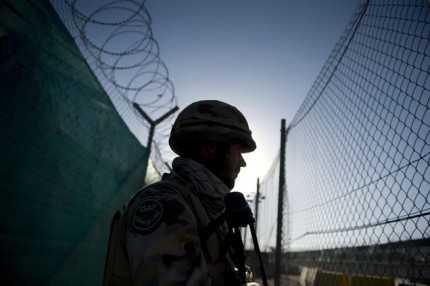Hungarian Force Protection Personnel at KAIA Have Increasingly More Tasks
Szöveg: MTI | 2012. december 4. 8:53The Hungarian soldiers serving with the Force Protection Group at Kabul International Airport (KAIA) have an ever-expanding workload. The preparations for the 2014 withdrawal are already under way, and in consequence there has recently been a significant increase in the traffic at the airport of the Afghan capital, Col. László Benda, the Force Protection Group Commander of the Kabul International Airport told Hungarian News Agency MTI in an interview on Saturday, December 1.
The ground traffic at the airport is significant too, as around 500 NATO vehicles and close to 800 civilians enter the Hungarian-guarded gates every day, as well as 80 articulated lorries that need to be searched completely. The screening is done with the use of a high-powered scanner which is capable of taking 3D pictures even of the smallest bolts of the trucks – the USD 10 million worth device consumes six million volts at its maximum output.
Situated in the northern part of Kabul, the airport and its agglomeration together cover an area of 15 kilometers in width and 18 kilometers in length. The actual airport is much smaller than that, but for example, the part guarded by the Hungarians is around 60 hectares, the colonel told us. According to the commander, these days the insurgents mainly launch rocket attacks against the airport and the nearby governmental and NATO center. Over the last few months, a number of such free rockets hit the area of the base and its vicinity, most of them causing only material damage, but there was a fatality in those actions too. He added that suicide bombers pose the second biggest danger – and next on the list are the complex attacks in which the insurgents use their small arms too.

The number of so-called “green on blue" attacks is on the increase in the whole area of Afghanistan. “On these occasions, the enemy put on the uniform of the allied forces (usually that of the Afghan National Army (ANA)), then infiltrate into the NATO forces as assailants", he added. While only two such attacks were reported in 2007, as many as 43 such attacks were already carried out this year, he added. The spread of magnetic bombs causes growing problems in Kabul. These are usually emplaced on vehicles, and an additional problem is presented by a new type of clothing suitable for suicide bombing. It is soaked with chemical explosives and so contains only a tiny fuse which is only a few centimeters in size and therefore difficult to detect.
László Benda stressed that as yet no Hungarian soldiers have been attacked while guarding the Kabul International Airport. Currently around 230 Hungarian soldiers are serving with the HDF Force Protection Contingent at the airport of the capital of Afghanistan, but the number of Hungarians serving in other positions around the capital is somewhat higher. The Hungarian Defence Forces will withdraw their Provincial Reconstruction Team (PRT) contingent from Baghlan Province in March 2013. At the same time, they will terminate their provincial development activity too, but at NATO’s request, since October 1 this year the Hungarian soldiers have been performing military Force Protection duties for six months at the Kabul International Airport.
Photo: Szilárd Koszticsák (MTI)